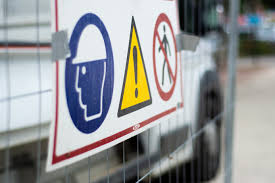How To Finish A Construction Project Despite COVID-19
In feedback to COVID-19, state as well as city governments are providing orders suspending “non-essential” business. At this point in the COVID-19 pandemic, construction job is typically consisted of on the checklist of important company, specifically if it relates to energies, telecommunications, transportation, and also health care infrastructure. Firms might intend to inspect the state and also regional orders in place in each territory where they are currently operating to establish if a building and construction job may continue.
Properly Handling Ongoing Construction Projects During Pandemics
Connect with the proprietor concerning COVID-19.
General service providers might intend to promptly examine their agreements, particularly the sections pertaining to force majeure and making insurance claims for unexpected hold-up. Comply with all notification requirements asap, by providing the owner with all available info on (a) the extent to which the job is being impacted by COVID-19; (b) the steps the general contractor is taking to proceed with the work in a risk-free manner, or, if required, to momentarily put on hold job; as well as (c) the methods which COVID-19 is influencing or might affect the task cost and timetable.
This is no warranty that the basic service provider will not need to birth at least some of the COVID-19-caused rises to the task costs as well as impacts to the routine, but adhering to notification demands might at least avoid any future claims of lack-of-notice. If the proprietor decides to put on hold job, meanwhile, quickly adhere to all legal needs regarding job suspension. It is likewise helpful to inform the owner of extra precautions in position in response to the COVID-19.
Develop as well as execute a transmittable disease preparedness as well as feedback plan.
Consider customizing the plan to meet organisation needs, yet normally additionally take into consideration controls needed to address threats of COVID-19 exposure at the worksite, consisting of identification of: (a) potential locations of boosted exposure risk (e.g., usual meeting place with usual surfaces and also locations where employees should operate in tight quarters); (b) nonoccupational danger variables in the house and also in area setups; as well as (c) employees’ specific risk variables (e.g., older age; chronic medical problems, including immunocompromising problems; and also maternity). General professionals might likewise wish to create the strategy to make sure that it is instructional and also offers clear advice to employees on how to acquire more details and report questions or concerns.
Interact with subcontractors regarding COVID-19.
Prior to speaking to subcontractors, examine the subcontractor agreements as well as determine material terms, such as arrangements pertaining to health and safety; compliance with federal, state, and also regional legislations; and also any type of task conclusion due dates. In interactions with subcontractors, verify the basic contractor’s conformity with COVID-19 guidance provided by the U.S. Centers for Disease Control as well as Prevention (CDC), including that the general specialist actively encourages sick staff members to stay home, which subcontractors also follow advice from the Department of Labor’s Occupational Safety as well as Wellness Administration and Wage and also Hour Division. Take into consideration offering subcontractors an avenue to report to the general specialist’s presumed COVID-19 exposure at the task website.
Customize task guidelines to facilitate social distancing.
This may consist of restricting the amount of subcontractors might service a specific job each time, along with limiting rotational functioning hrs. It may also include stopping job-provided lunches, shared pens for jobsite sign-ins, as well as in-person conferences in limited spaces, such as work trailers. Consider holding tool kit as well as various other safety and security meetings in an exterior room with all employees standing at least 6 feet apart. Consider limiting worksite access only to people who are important for the job.
Boost schedule of handwashing stations as well as disinfectant wipes.
In addition to increasing the stations and also products, adhere to the CDC’s referrals to publish CDC wellness promotion products relating to COVID-19. The CDC additionally recommends wiping down with anti-bacterial wipes high-contact areas and also shared tools, as well as encouraging breathing etiquette, consisting of covering coughings and sneezes.
Place as well as respond to signs and symptoms.
General specialists may intend to train project supervisors or managers as well as various other employees to spot signs and symptoms of feasible infection in colleagues or subcontractors’ employees. Think about applying a “see something, say something” state of mind. In reaction to identified symptoms, the basic contractor might intend to omit the symptomatic staff member, communicate the exclusion to the subcontractor (if appropriate), and call for medical clearance before permitting the staff member to return to the job.
Give education and learning on the Families First Coronavirus Response Act (FFCRA).
Reliable April 1, 2020, the FFCRA will go into result, changing the lawful requirements connected to employee benefits and also fallen leaves of lack. Along with establishing whether the basic specialist is subject to the FFCRA, the basic contractor might intend to think about informing its subcontractors of this new employment legislation responsibility.
